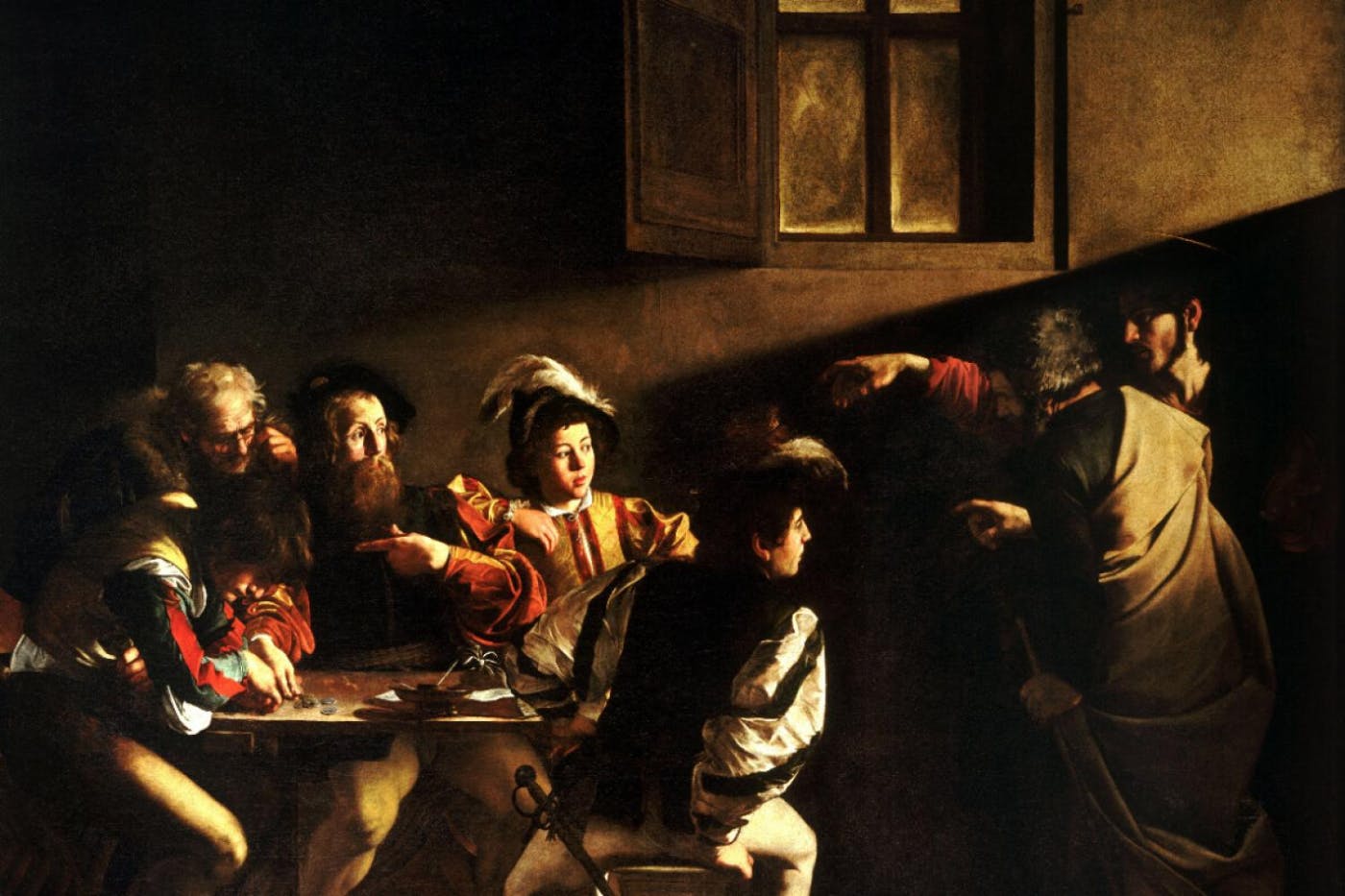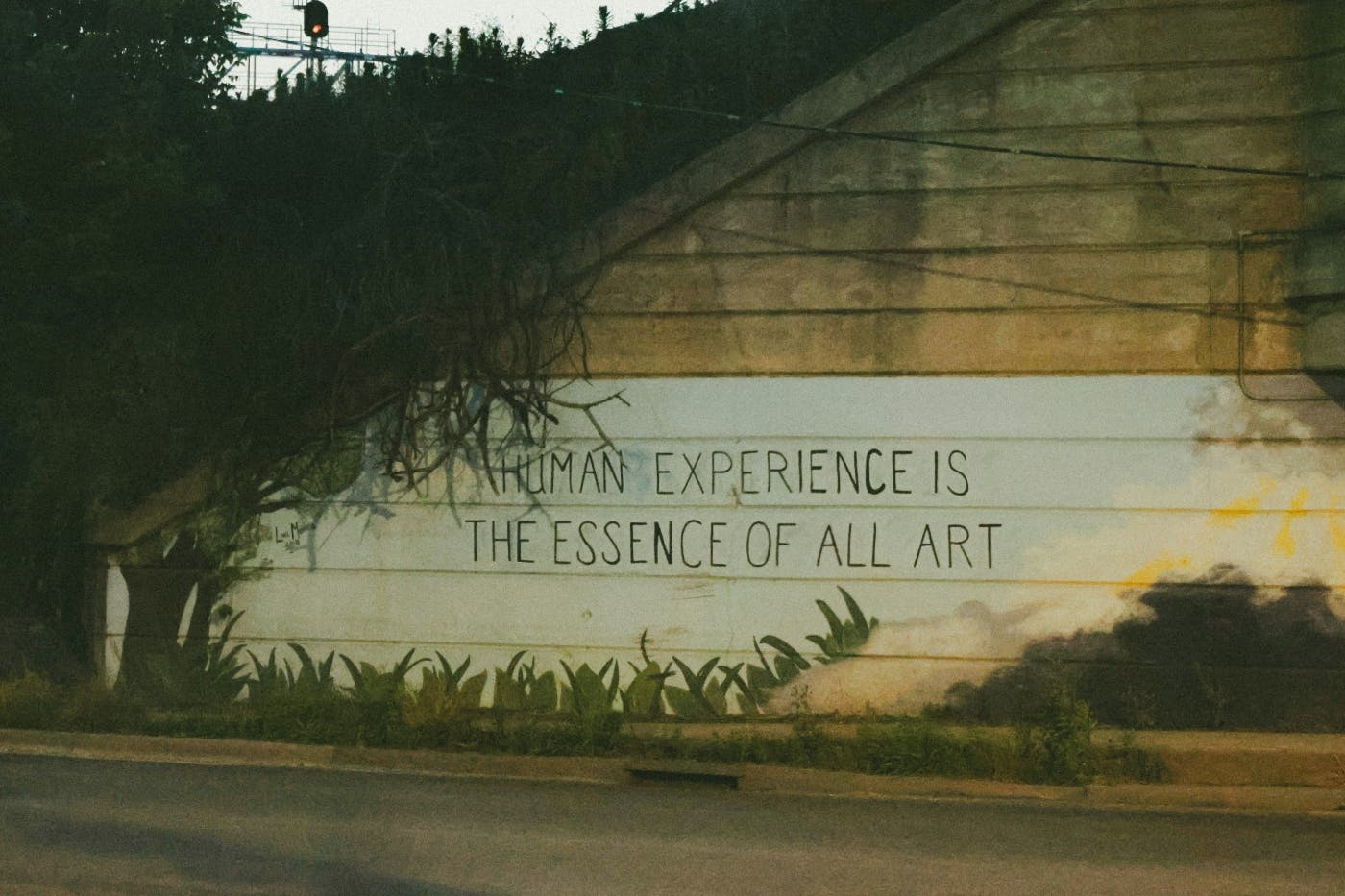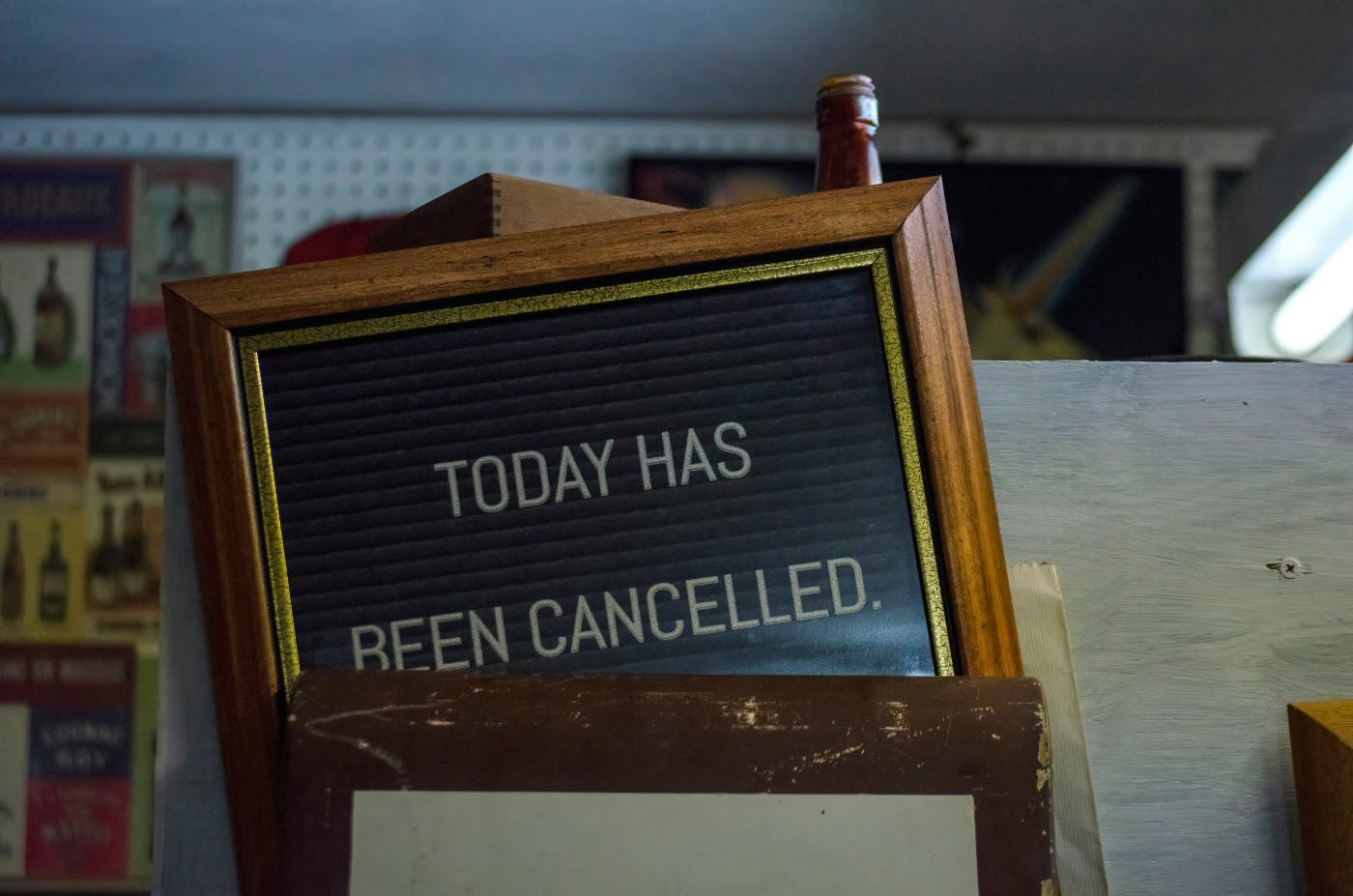
Brands are storytellers in their own right—if they want to succeed, they need to create narratives that are more than just "Buy this thing!" They need to connect, resonate, and leave an impression that lasts.
The Power of Storytelling
Memorial Park, Reading, MA, I was a tot living in a small town that was safe, way back when before cell phones and streaming networks, when my friends and I would get up on a Saturday morning, get on our bikes, and just go. Be gone for the day, and our parents didn’t worry.
One Saturday morning, I peddled my bike down to the park because the Boston Children’s Theater brought their Playmobile to town. A giant bus that opened up to be a stage. I sat on my bike and watched from a distance, pretending I was too cool to sit and give this my full attention. But after a few minutes, I was pulled in.
It would be easy to say that was when I decided to be an actor, but that’s not true. It is true to say that was when I started to understand the power of story and storytelling. I looked around the park, kids, adults, people of color, people with their traditional family foods, songs, and games, all gathered, all listening and watching these young actors tell stories. I hadn’t even noticed when I allowed my bike to drop to the grass and I with it. I was held captive, and I knew there and then that I wanted to tell stories. I wanted to communicate with people through stories.
That’s what the arts do. That’s what my introduction to the arts did for me, and though I am not rich and famous, I am moved and touched, educated and open to the world because of the arts.
The arts are, at their core, all about storytelling. And I’m not just talking about the kind of storytelling where your uncle drones on about his fishing trip (we've all been there). I mean the kind of storytelling that captivates, moves you, and connects people across time, space, and yes, even social media feeds.
Think about it: every time you watch a commercial or see a brand post on Instagram, there’s a story being told. Sure, it’s usually less dramatic than the plot of Les Misérables, but it’s still a narrative. Whether it’s the story of how your favorite pair of sneakers came to life or the emotional journey of an ad with puppies and rainbows, we, as consumers, are listening.
And that’s where branding takes a cue from the arts. Brands are storytellers in their own right—if they want to succeed, they need to create narratives that are more than just "Buy this thing!" They need to connect, resonate, and leave an impression that lasts. Just like that afternoon at Memorial Park, the right story can pull you in, make you forget about everything else, and leave you thinking about it long after the show’s over.
In the end, whether it’s the Boston Children’s Theater or the latest ad campaign, we all respond to the same thing: a story that makes us feel something. For brands, that’s the magic. That’s the reason we can be convinced to spend a little more for a brand that tells its story well. It’s not just about the product; it’s about the emotional journey we take along with it.

Fostering Creativity and Innovation
When you think about the arts, it’s easy to get lost in the beauty of a painting, the energy of a performance, or the power of a well-crafted piece of music. But the true magic of the arts goes deeper than aesthetics. The arts fuel something even more essential—creativity.
Creativity isn’t just about coming up with wild ideas or quirky inventions. It’s about seeing the world differently, breaking out of the ordinary, and challenging the status quo. And this is exactly what the arts do—they push boundaries, they ask questions, and they make us think in new ways.
Look at the world of art history for a moment. Think of the Impressionists who shook up the art world by stepping away from traditional painting techniques and embracing something more experimental. Or the Abstract Expressionists, whose use of color and form broke down artistic conventions and gave birth to new ways of seeing. These artistic revolutions didn’t just change how we view art; they changed how we approach creativity in every area of life.
In the same way, the arts push boundaries in branding and business. We see brands tapping into this artistic spirit of risk-taking and innovation every day. Take Nike, for example. The “Just Do It” campaign wasn’t just a catchy slogan—it was an invitation to challenge personal limits. Nike’s approach to branding mirrors the kind of bold, revolutionary thinking you’d find in the world of performance art. They didn’t just sell shoes; they sold a mindset. A sense of possibility. The brand connected with consumers on a deeper, more emotional level, and in doing so, sparked a movement. That’s the kind of innovation the arts can fuel—a shift in perspective that leads to progress.
The relationship between art and innovation isn’t just theoretical—it’s something we see in action. If you look at some of the most successful brands today, they’re not just operating in traditional business spaces. They’re creating art. Take Tesla, for instance. Elon Musk doesn’t just want to sell cars; he wants to change the way we think about transportation, energy, and even our future on this planet. And in the process, he’s made innovation feel like an art form. The clean lines of a Tesla car aren’t just about function—they’re designed with the same level of thought and passion you’d expect from a sculpture. It’s about creating something beautiful, functional, and disruptive, all at once.
And let’s not forget the power of design. Good design is one of the most important aspects of branding because it goes beyond visual appeal—it’s about creating an experience. When you interact with a brand, whether you’re browsing their website or unboxing a product, the design is telling a story. Think about the experience of unboxing an Apple product. The sleek, minimalist packaging. The perfect fit of the components. The way everything just feels right. This is where the arts and innovation meet. Apple didn’t just make great products—they crafted a sensory experience, one that taps into human emotions and makes you feel something the moment you interact with their brand. That’s not just creativity—that’s the kind of high-level, artistic thinking that leads to lasting impact.
Now, this kind of innovation is also about thinking in broader, systemic ways. It's about how the arts challenge societal norms, confront the status quo, and open up new possibilities for thinking. Brands can learn from this by being more than just transactional. It’s easy to think of branding as something that just sells a product, but true innovation happens when a brand’s message or mission changes the conversation entirely. This is where we see art influencing marketing in the biggest ways. It’s not just about selling; it’s about creating movements, evoking emotions, and shifting perceptions.
To really unlock creativity in branding, brands need to think beyond the product and look at the human experience they’re engaging with. Whether it’s a social issue, a cultural trend, or even a simple shift in how people live their lives, the best brands tap into these moments with the same energy and urgency you’d find in a performance artist pushing their limits on stage. It’s not just about pushing product—it’s about pushing people’s boundaries, encouraging them to rethink what’s possible.
Think of a brand like Patagonia. They’re not just selling outdoor gear—they’re selling a commitment to environmental activism. Their marketing is more than product-centric; it’s about a lifestyle, a movement, and a shared value system. Patagonia isn’t just tapping into a consumer need—they’re tapping into a collective desire to do better, to be better, and to change the world. That’s innovation with purpose, and it’s born from the same kind of creative thinking that drives the arts.
Ultimately, creativity is not a luxury—it’s the foundation for growth and progress in every field. Just as artists bring new ways of thinking to the world, so too must brands and businesses continuously challenge themselves to innovate, to risk, and to embrace the unknown. Because without creativity, there’s no innovation. And without innovation, there’s no future.

Pushing the Boundaries—The Art of Risk and Reward
Pushing boundaries is where the magic happens. It's where artists create their most daring works, where brands make their boldest moves, and where innovation thrives. But what does it really mean to push boundaries, and how do you do it without crashing and burning?
At its core, pushing boundaries is about breaking away from convention. It’s about stepping outside the comfort zone and challenging the accepted norms. For an artist, this could mean experimenting with new media, breaking traditional forms, or addressing taboo subjects. For a brand, it might mean offering a product or service that the market isn’t quite ready for, or positioning the brand in a way that forces people to think differently.
Take, for example, the rise of streaming platforms like Netflix. Years ago, the idea of watching TV shows and movies online was considered niche, and few believed it would replace traditional cable. But Netflix didn’t just follow the trends—they created their own. They took the risk of investing heavily in content creation, pushing the boundaries of how we consume media, and completely transforming the entertainment industry. Today, they’re not just a streaming service; they’re a major player in global content creation, influencing everything from the way stories are told to how we expect our entertainment to be delivered.
But pushing boundaries isn’t easy. In fact, it’s risky. When you challenge the status quo, you’re bound to face criticism, resistance, and potential failure. Artists who push boundaries often face backlash, whether it's from critics who don’t understand their work or from audiences who feel uncomfortable with the change. Brands, too, face this challenge—think of all the new products that fail because consumers weren’t ready to embrace them, or the campaigns that fall flat because they misunderstood the cultural climate.
And then there’s the cost. Pushing boundaries takes resources—time, money, and energy. It requires a willingness to invest in something that might not pay off immediately, or at all. For every breakthrough product, there are countless ideas that never make it past the drawing board. For every artist who creates a masterpiece, there are hundreds who toil in obscurity. The risk is real, and the failure rate is high.
But here’s the thing: the reward of pushing boundaries is what makes it worth it. When it works, the payoff can be extraordinary. Brands that push the boundaries in a meaningful way often set themselves apart from the competition and build deep, lasting connections with their audience. Think about Apple again—its radical shift in design philosophy and user experience has made it one of the most valuable companies in the world. Or consider how a show like Black Mirror has challenged how we think about technology and society, forcing us to confront our own fears and hopes in the digital age.
The reward is not just financial, either. When you push boundaries, you invite change, growth, and evolution. The reward is the ability to shape the future, to influence culture, and to make a real impact. It’s about creating something that challenges the norms and leaves a lasting mark on the world. And while the journey may be uncertain, it’s also the only way to achieve the truly transformative.
Pushing boundaries, however, is a delicate balance. You can’t just push for the sake of pushing; there has to be a purpose behind it. It has to be done thoughtfully and with intent. When brands push boundaries in a way that aligns with their values and speaks to the deeper needs of their customers, it’s not just about breaking barriers—it’s about breaking through to something better.
So, how do you push boundaries? Start by questioning everything. Why do things have to be done this way? What if there’s a better way to approach the problem? It’s about asking “What if?” and then daring to find the answer. But just as important is understanding the cost. Know that pushing boundaries means you’ll have to take risks, and sometimes, you might fail. But it’s that willingness to try that makes the reward so worthwhile.

The Cost of Playing It Safe—Why Innovation Requires Risk
We live in a world that loves certainty. It’s easier, more comfortable, and safer to stick to what we know. Whether it’s a tried-and-true product or the same marketing strategies that have always worked, the temptation to play it safe is ever-present. But here’s the catch—while playing it safe might keep things stable, it also keeps you stagnant.
Innovation, by its very nature, requires a departure from the familiar. It’s about venturing into unknown territory, experimenting with new ideas, and taking risks that could fail. And that’s where the cost comes in. Innovation isn’t free. It demands resources—time, money, and a commitment to the idea that things can be better, even if you don’t know exactly how.
The history of art is full of examples of artists who took huge risks and were rewarded for their boldness. Think about Pablo Picasso, who broke away from traditional artistic conventions and pioneered Cubism. At the time, his work was controversial and misunderstood, but today, Picasso is regarded as one of the most influential artists in history. Or consider James Cameron’s Avatar, a film that pushed technological boundaries and became one of the highest-grossing movies of all time. Cameron’s commitment to using cutting-edge 3D technology was a huge risk that paid off in a major way.
Similarly, when Nike made the decision to feature controversial athlete Colin Kaepernick in their “Dream Crazy” campaign, they took a massive risk. At the time, Kaepernick was a polarizing figure, and many questioned whether the brand could survive the backlash. But Nike stuck to their guns, believing in the power of their message and the values they stood for. The result? A massive surge in sales, greater brand loyalty, and increased market share. It’s a perfect example of how taking a risk, even when the outcome is uncertain, can reap huge rewards.
But here’s the catch—when a brand takes a risk, there’s always the possibility that the idea might flop. And let’s face it, failures sting. Whether it’s a new product that doesn’t hit the mark or a marketing campaign that falls flat, the cost of failure is real. But it’s in those failures that valuable lessons are learned. It’s the willingness to take risks and fail that separates true innovators from the crowd.
The other cost of playing it safe? Missing out on the opportunity to disrupt the market. Look at brands like Airbnb and Uber. Both companies took risks that completely reshaped entire industries. The hotel and taxi industries were playing it safe, sticking with traditional models. But Airbnb and Uber? They saw a gap, took a risk, and changed everything. And that’s the kind of game-changing innovation that comes from stepping outside of the comfort zone.
And while taking risks doesn’t always lead to overnight success, it builds a culture of constant improvement. Innovation isn't about hitting it out of the park every time; it's about trying, failing, learning, and adjusting. That’s how new ideas, better processes, and more relevant products come to life.
In contrast, playing it safe doesn’t just stifle innovation—it can make your brand irrelevant. In a world where trends change faster than we can say "viral," sticking to what worked yesterday might mean you’re already behind. You might think you’re holding on to stability, but in reality, you’re holding on to an outdated version of success.
The key to avoiding this trap is embracing calculated risk. It’s not about throwing caution to the wind or gambling your entire future on a whim. It’s about finding those opportunities that allow for creative exploration without abandoning your core values. It’s about knowing that innovation requires not just vision, but courage—the courage to fail and the resilience to bounce back.
So, ask yourself: where are you playing it safe? What’s holding you back from trying something new, taking a risk, and seeing where it leads? It might feel uncomfortable, even scary at times, but in the end, it’s those risks that push us forward and open up new possibilities. In a world that rewards bold thinking, playing it safe is the riskiest move you can make.

The Role of Art in Building Community and Identity
Art has always been a powerful tool for shaping community and identity. From public art installations to community theater, art unites people, fosters a sense of belonging, and allows individuals to express who they are in a collective space. The arts connect us, help us understand each other, and encourage empathy in a way that few other forms of communication can.
Art also provides a platform for people to express their unique identities while contributing to a larger cultural conversation. And this connection is exactly why art is such a powerful tool for brands—they can use it to create a sense of community, define their identity, and build a loyal audience who sees their values reflected in the brand itself.
A great brand isn’t just about products or services—it’s about creating a culture. It’s about weaving together values, beliefs, and emotions that resonate deeply with a community. Take Coca-Cola, for example. It’s more than just a beverage; it’s a symbol of sharing and togetherness. Coca-Cola’s "Share a Coke" campaign wasn’t just clever marketing—it was a way to personalize the experience and make people feel like they were part of something larger than themselves. It tapped into our human need for connection and fostered a sense of unity, with everyone invited to share a Coke with friends, family, and even strangers.
Brands like Apple and Patagonia have also done an exceptional job of building community. Apple’s "Think Different" campaign wasn’t just about selling computers—it was about inviting people to join a movement of rebels, visionaries, and innovators. Apple’s success lies in creating a cultural identity that transcends technology and becomes synonymous with creative thinking and personal expression.
Similarly, Patagonia’s commitment to sustainability has done more than just define its product—it has shaped an entire community around the brand’s values. Patagonia’s efforts to take on environmental issues through activism and transparency have created a loyal following of customers who don’t just buy products—they support a cause. For these consumers, buying from Patagonia isn’t just a transaction; it’s a statement about their own values. It’s a reflection of who they are as individuals, and a symbol of the community they belong to—a community that cares about the planet and actively works to make a difference.
Patagonia, I know, comes up a lot in my writing, but there’s a reason for that. No, I’m not getting a kickback, and Patagonia isn’t reading my blogs—I simply believe they do such good business because they’ve built something meaningful. They understand how to connect with people on a deeper level, create shared values, and build a loyal, values-driven community. That’s a textbook example of how art, values, and branding intersect to create something much larger than a product or service.
Art, storytelling, and cultural expression aren’t just nice-to-haves for brands—they’re essential to building authentic connections. They allow a brand to reflect the cultural values of its community, to be part of something bigger than just a transaction. Whether it’s through social campaigns, brand storytelling, or even partnering with artists, brands can use art to reflect the collective identity of their audience.
Think about a brand like Nike. They’ve built a community around empowerment and athleticism, not just sports. Their “Just Do It” campaign, with its deep focus on overcoming obstacles and pushing through challenges, doesn’t just sell sneakers—it sells a mindset. The community around Nike is one of empowerment, strength, and resilience. It’s a brand that’s built on the art of storytelling, cultural movements, and the universal human desire to achieve greatness.
This approach of weaving art into branding doesn’t just strengthen customer loyalty—it also builds long-term cultural relevance. A brand that taps into the heart of what its audience values isn’t just selling a product; it’s building a legacy. When brands like Patagonia or Apple speak to the deeper needs of their audience, they create communities that transcend the transactional. These communities are emotionally invested, and that emotional connection is the foundation of brand loyalty.
In the end, art has the power to shape not only an individual’s identity but also the collective consciousness. It can bring people together, create movements, and make lasting impacts on culture. For brands, this is a golden opportunity: to use art and cultural expression to build an identity that resonates deeply with the people they serve. It’s about creating a brand that feels personal, not just something that exists in the marketplace. It’s about making people feel seen, heard, and understood.

The Impact of the Digital Age on Art, Branding, and Connection
The digital age has fundamentally changed the way we experience art and how brands connect with consumers. What was once confined to galleries, theaters, and live performances has now spread across social media, streaming platforms, and digital canvases. This shift has democratized art, making it more accessible than ever while also providing new opportunities for brands to connect with their audience in innovative and often unexpected ways.
Take social media, for example. Platforms like Instagram and TikTok have not only become popular for personal expression but also for brand storytelling. Brands are now creating bite-sized pieces of art, from short-form video content to visually compelling posts, to capture attention in an age where consumer focus is fleeting. This shift from traditional advertising to more creative, engaging forms of storytelling has blurred the line between art and marketing.
For artists, the internet has opened up new avenues to showcase their work. It’s no longer necessary to be confined to physical galleries or the traditional routes of recognition. Digital art, memes, and online content have given rise to new art forms, allowing artists to express themselves in ways that resonate with digital natives. The ability to share art instantly across the globe has also allowed for cultural movements to gain momentum quickly, sometimes even faster than they would have in the past.
For brands, this democratization of art and storytelling presents both challenges and opportunities. On the one hand, brands must now navigate a world where content is constantly in flux, and consumer attention spans are shorter than ever. But on the other hand, the rise of digital platforms has given brands the ability to interact with their audiences in real-time, fostering a sense of immediacy and connection that was previously impossible.
Look at how Nike has used digital platforms to amplify its brand messaging. Through a combination of social media engagement, innovative app features, and content that resonates with both their athletic and non-athletic audiences, Nike has been able to tap into a digital community that values empowerment, strength, and perseverance. This is a perfect example of a brand using digital platforms not just as a tool for promotion but as an extension of its brand identity.
Meanwhile, digital art has taken on a life of its own in the branding world. Take the rise of NFTs, for example. Digital art as a form of collectible, authentic, and tradable pieces has opened up an entirely new market for brands to explore. Many brands have embraced this new frontier to engage with younger, digitally savvy consumers who see NFTs as a new form of art and ownership. From fashion brands like Gucci and Adidas releasing their own NFTs to Coca-Cola launching limited-edition NFTs to promote a new campaign, digital art is no longer just something to admire—it’s becoming a key part of how brands create value and engagement in the digital space.
The digital age has also shifted how art and branding connect with audiences. In the past, art was a passive experience; we viewed it in galleries or on our TVs. But today, art and branding are interactive. Through user-generated content, social media challenges, and interactive campaigns, brands are creating an immersive experience that encourages consumers to participate and co-create. Whether it’s creating your own design for a brand’s product or participating in a hashtag challenge, the digital space allows brands to engage their audiences in a way that was previously unimaginable.
In many ways, art in the digital age has become more fluid. Traditional forms of art, like painting and sculpture, still have a place, but now they exist alongside digital works, like 3D art, animations, and virtual reality experiences. As a result, brands are finding new ways to integrate art into their campaigns, whether through virtual experiences, digital product design, or augmented reality ads.
The result is a new era of connection—one that’s fast, fluid, and interactive. Brands have the ability to foster deep emotional connections with their audience by creating experiences that feel personal and participatory. Art and branding no longer live in separate spaces; they’re intertwined in a way that’s shaping the future of both fields.

The Future of Art, Branding, and Innovation
As we look to the future, it’s clear that art and branding are set to evolve in ways we can’t entirely predict. Technological advancements like artificial intelligence, virtual reality, and augmented reality are already shaping the way we interact with both art and brands. The line between creative expression and marketing is becoming increasingly blurred, and the possibilities for innovation seem endless.
One of the most exciting developments is the rise of AI in creative fields. While many initially saw AI as a tool for automating mundane tasks, we’re now witnessing its ability to produce original works of art, from music to visual design to even poetry. Brands are starting to experiment with AI-driven campaigns that personalize experiences for users in real-time, using algorithms to create tailored content that resonates with individuals based on their preferences and behaviors.
This shift opens up new possibilities for brands. Imagine a world where your favorite brand could send you personalized art, created just for you, based on your tastes and interactions with their platform. This kind of highly personalized experience creates a deep sense of connection, where art and branding are no longer just about promoting a product—they become part of your life in a meaningful way.
Virtual reality (VR) and augmented reality (AR) are also taking art and branding into uncharted territory. VR can transport us to entirely new worlds, allowing brands to create fully immersive experiences for their audience. Think about a VR experience where you can step into a brand’s story—walking through their world, interacting with their products, and experiencing their values firsthand. Brands like IKEA and Nike are already experimenting with AR, allowing customers to visualize how products fit into their homes or how they perform in real life. This kind of immersive experience is not just about selling products; it’s about giving customers the chance to feel connected to the brand in ways that go beyond the transactional.
As these technologies continue to develop, brands that embrace them will be able to create more meaningful connections with their customers. They’ll be able to tell stories in ways that were once impossible, weaving together art, technology, and human emotion to build deeper relationships. For artists, this means greater freedom to explore new forms of expression. AI can be used to push boundaries in ways that challenge traditional ideas of authorship and creativity. VR and AR open up new ways to experience art, allowing viewers to interact with pieces in ways that weren’t possible before.
But with all of these exciting advancements comes the question: how do we keep the essence of what makes art so powerful in this rapidly changing landscape? In a world where everything can be digitized and customized, how do we ensure that art and branding retain their ability to move, inspire, and connect us on a human level?
The answer lies in balance. As technology advances, we can’t forget the emotional power of art—the way it connects us, speaks to our hearts, and makes us see the world differently. Brands and artists that focus on creating authentic, meaningful experiences will continue to thrive in this new era. Innovation is important, but so is human connection.
Looking ahead, we’re entering an era where creativity knows no bounds. The future of art and branding will be defined by a willingness to experiment, to take risks, and to use technology in ways that enhance the human experience rather than replace it. Brands that can harness the power of innovation while staying true to their core values will not only survive—they’ll lead the way into a future where art and branding exist in harmony, helping to shape the world around us in ways we can’t yet imagine.

Summing Up: The Enduring Power of Art in Our Lives
The arts have always been more than just a form of entertainment—they are a reflection of who we are, a mirror that shows us our shared humanity, and a force that connects us across generations. From the stories told on stage and screen to the music that resonates with our souls, art shapes the way we see the world and the way we see each other.
But beyond the personal experience, art has an even deeper societal role. It helps us understand one another. It fosters empathy, compassion, and creativity, guiding us through times of joy and sorrow. The institutions that bring art into our homes—whether it’s through the magic of PBS, the educational impact of Sesame Street, or the gentle wisdom of figures like Mr. Rogers—are critical to maintaining this connection. These programs have helped us, as a society, see the value in the arts and in creativity, teaching us to think, feel, and engage with the world in more meaningful ways.
It’s easy to overlook the profound impact these cultural touchstones have had over decades, but they’ve provided a framework that encourages future generations to appreciate the importance of art in our lives. They’ve cultivated a sense of community, of understanding, and of shared responsibility for preserving the beauty and importance of the arts.
While the future is filled with exciting possibilities for how the arts can continue to evolve, we must also remember the crucial role these institutions play in preserving the arts’ place in our society. The arts are not a luxury—they are a necessity. They form the bedrock of our culture, teaching us about who we are, how we relate to one another, and what it means to be human.
As we look to the future, we need to ensure that the arts remain accessible to all. It is up to all of us to recognize their value, not just for their ability to entertain, but for their power to shape the way we think, connect, and grow as a society. Let’s make sure the arts continue to thrive—not just for us, but for the generations to come.

